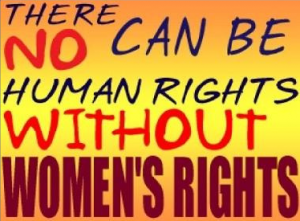Nobel-prize winning economist Kenneth Arrow has defined discrimination as “the valuation in the market place of personal characteristics of the worker that are unrelated to worker productivity”. These personal characteristics may be sex, race, age, national origin or sexual preference.
 Heather Joshi is Research Fellow of the Centre for Population Studies at the London School of Hygiene and Tropical Medicine. In 1978, he made a survey with the result that men earned on average 58% more per hour than women.
Heather Joshi is Research Fellow of the Centre for Population Studies at the London School of Hygiene and Tropical Medicine. In 1978, he made a survey with the result that men earned on average 58% more per hour than women.
The estimates for 1978 indicated more severe discrimination on the basis of gender for women with no qualifications (and for the 3% with university degrees) than for those who had completed their education with O- and A-levels.
I am going to talk about some factors that could affect women’s earnings discrimination
–Human capital: i.e. there are differences in educational levels and work experience between males and females.
–Part-time working: a significant proportion of women work part-time and part-time work typically pays less well than full-time jobs.
–Travel patterns: Females may be relatively geographically immobile because they are tied to their husbands’ place of employment.
The Summary of the Parliamentary Assembly of the European Council (30 March 2005) recommends that the Committee of Ministers entrust the competent intergovernmental committee to set up a project to combat discrimination against women in the workforce and the workplace.
I have started talking about the women’s earning discrimination and now, I am going to continue with labour discrimination.
For the first time since the calculation of EU-27 unemployment statistics started (in 2000), the unemployment rate for women was lower than that for men in 2009, and remained so in 2010. Male unemployment rates were higher than the corresponding rates for women during that year in 14 out of 27 Member States. In the euro area, the unemployment rate for women remained higher than the male rate. The gap between male and female unemployment rates varied from -6.3 percentage points in Greece to +7.2 percentage points in Ireland.
Educational qualifications are still the best insurance against unemployment, which clearly increases the lower the level of education attained. This characteristic was noted in almost every Member State in 2010, as the average unemployment rate in the EU-27 for those having attained at most a lower secondary education was 14.2 %, much higher than the rate of unemployment for those that had obtained a tertiary education qualification (4.9 %).
References:
http://epp.eurostat.ec.europa.eu/statistics_explained/index.php/Unemployment_statistics
http://tutor2u.net/economics/revision-notes/a2-micro-labour-market-discrimination.html
